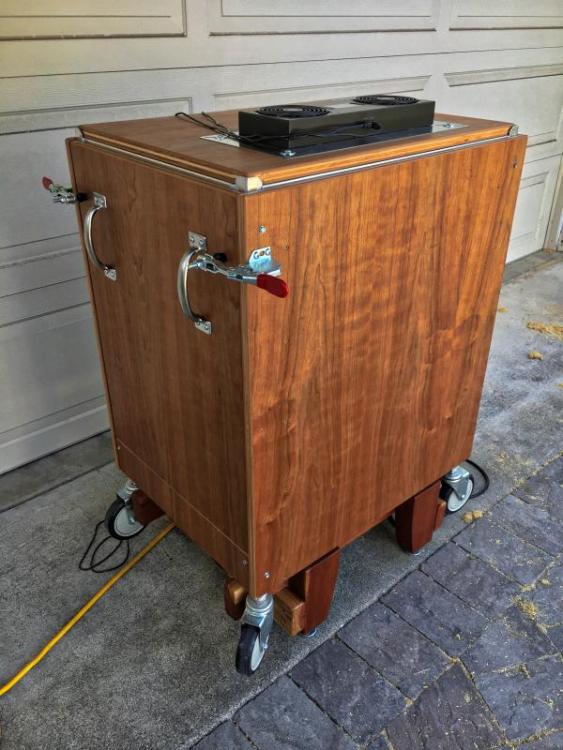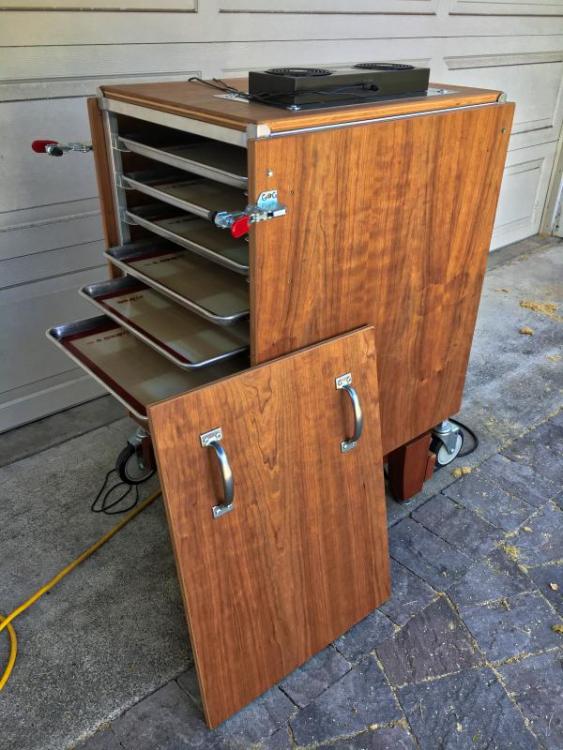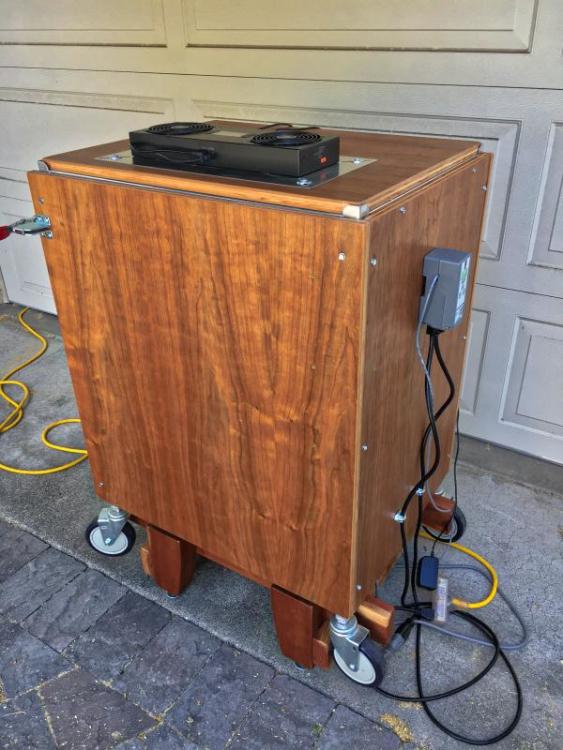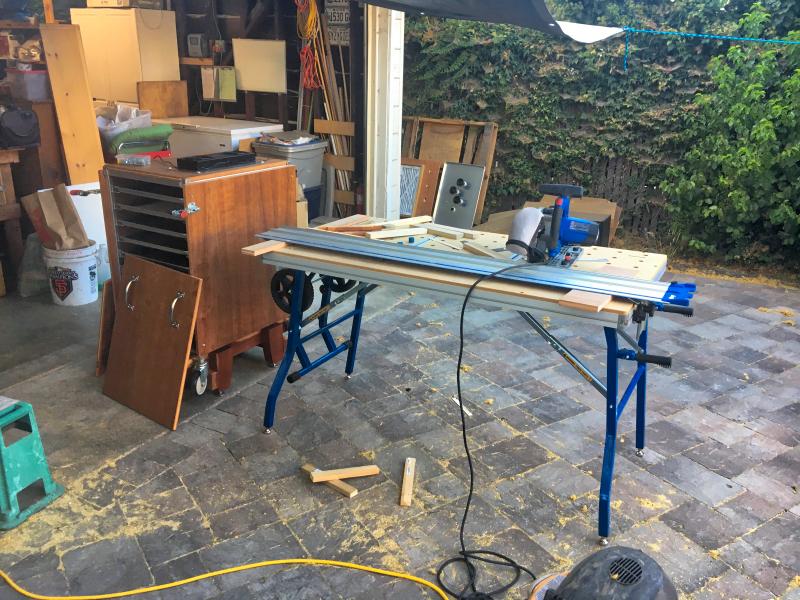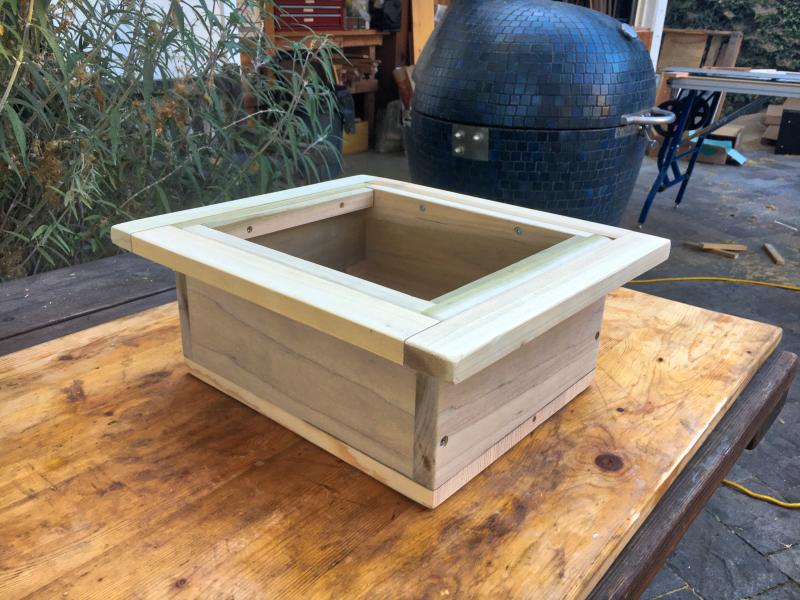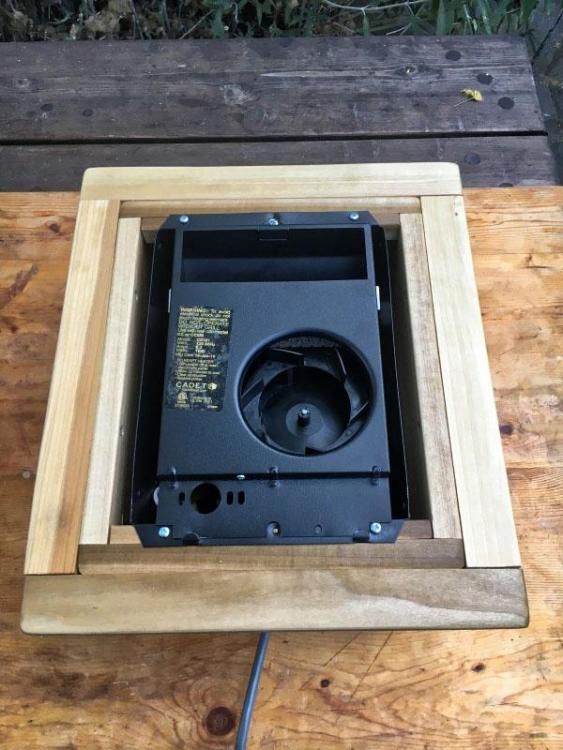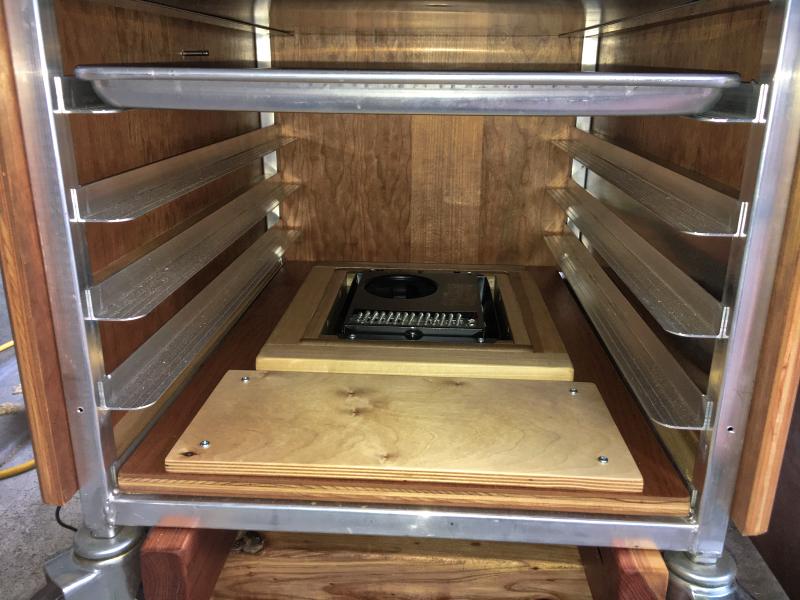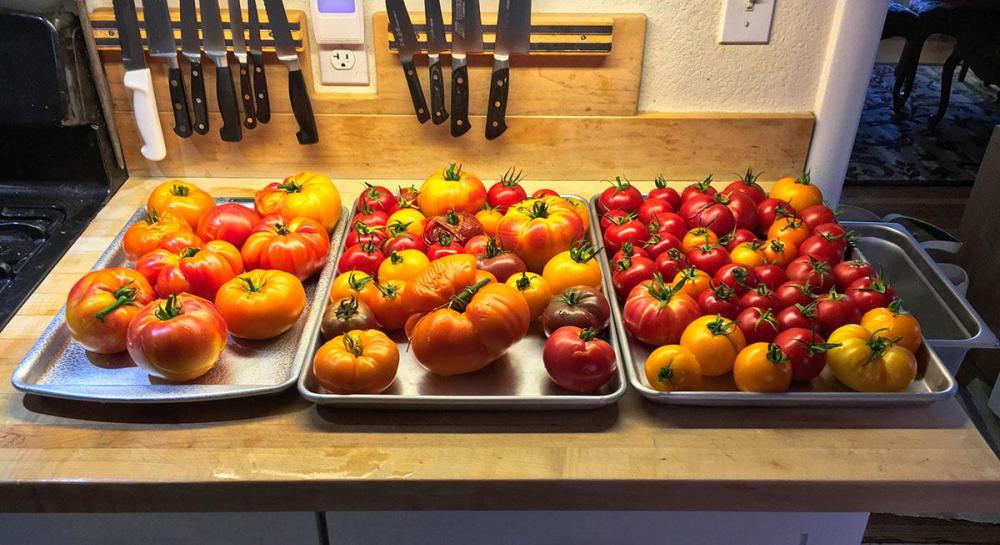Leaderboard
Popular Content
Showing content with the highest reputation on 08/07/2019 in all areas
-
We like to skin, salt, partially dry, and freeze our garden tomatoes. We haven't opened a can in well over a decade. Living in the "California" region of Italy, we're not hidebound by tradition. In Sicily and the south of Italy they make a very concentrated tomato paste from the best tomatoes they can grow. It's nothing like commercial paste in cans. As winemakers migrate to new climates, they adapt, recognizing which grape varieties grow best in their new digs. Similarly, the most remarkable tomatoes in California are dry-farmed Early Girls from Santa Cruz, and they make a spectacular estrattu tomato paste. Making this paste on fruit roll trays lining our 24 American Harvester dehydrator trays was quite the nuisance, so for a few years I've been meaning to make a dehydrator optimized for drying tomatoes and tomato paste. Each full sheet pan holds well over a gallon of liquid. The frame of this dehydrator is a 10 shelf sheet pan rack, that accepts full sheet pans with Silpat liners. The heat source is a Com-Pak wall heater suspended in a box, controlled by a Johnson A421 Digital Temperature Controller. The exit fans are an AirTitan T8-N crawl space fan array, with a control panel that looks much more at home in this application. The airflow is blocked on alternate sides of each sheet pan, directing the air to pass over each pan. In initial testing, tomato slices dry much more uniformly than in any commercial dryer I've used.7 points
-
I bought a couple of sacks of Fogo Argentinean Quebracho Lump via their website. The Fedex folks delivered the two boxes to the front porch as expected. I grabbed the dolly and took them to the shop to put them away. I opened the first box and look what was staring me in the face! You ever see one of these grills?4 points
-
I have to admit that I'm not that crafty in my brewing room, but I did put together the DIY version of the Mark's keg washer and my own stir plate for making yeast starters, both using plans/guides in homebrew magazines/on-line sites. Many homebrewers that I know have lots of interesting "gadgets" that they've put together to solve one problem or another in their brewing practices. Zymurgy magazine publishes a "homemade gadgets" edition every year with some of them included. Others have put together entire brewing systems, including the 3-tiered stands for them, with pumps, valves, connectors, controllers, etc. A few have even make their boil kettles and hot liquor tanks out of old beer kegs that they've cut the tops out of and added on the thermowells and ball valves. Not to mention converting old refrigerators and chest freezers into kegerators and fermentation chambers. As a hobbyist group, homebrewers are an inventive bunch, usually out of frugality! LOL1 point
-
His work is amazing: Sam Maloof Woodworker I oscillate between obsessed with walnut and obsessed with cherry. This was opportunistic cherry, it will turn red with more sun. My next door neighbor is a master woodworker; he used to work at Berkeley Mills and now has his own shop other side of our fence. Steve Jobs lived in an empty mansion because nothing was good enough for him, until he bought Pixar and they walked him down the street to see Berkeley Mills. In any case, my neighbor has a serious problem with exotic scrap wood; we've sat around fires that included bits of mahogany and teak. We've bought various pieces from him (outdoor table that used to be theirs, solid cherry kitchen table, an exact reproduction/replacement for particle board box store bathroom vanity in solid cherry). Much of the storage in my garage is from his "customer changed their minds" cabinetry. This was an unneeded sheet of 7-ply (middle layer MDF) plywood with Cherry veneer, that he sold me. I loved the math involved in how he reworked my cut list, to get new edges on all sides with a minimum number of cuts. I love my $900 Kreg track saw table, but his table saw is in a different league. In any case, they're also flooded with tomatoes, and they'll be using this dryer too. In Sicily they spread paste on tables in the sun, over multiple days. I buy two 20 pound boxes of Santa Cruz dry farmed Early Girl tomatoes at a farmers market, for $100. Wash several times, core, quarter, add 35g salt per ten pounds gross (here, 140g salt) and simmer in a commercial stock pot. (My favorite is the VOLLRATH SAUCE POT, 22QT. PROFESSIONAL STAINLESS STEEL - 3905.) Pass through coarse then fine food mill screens. By my records this yields 20 quarts of sauce. Each full sheet pan lined with Silpat will hold six quarts liquid to the brim, with an absolutely level dehydrator (note the leveling feet on my base). Seven trays is 42 quarts, so 20 quarts is less than half full, a comfortable margin. One scrapes and combines down to fewer trays as the sauce thickens. One aims for a 4:1 or 5:1 reduction. This used to take on the order of 12 hours in a conventional dehydrator; we'll see with this new rig. Right now the heater is 1000 watts; I've ordered a 1500 watt replacement to be able to reach any temperature / fan setting combination that I want. My version of estrattu is less salty and less dried than the Sicilian original. Theirs did not require refrigeration; we fridge or freeze ours, leaving a concentrated but fresher flavor. This is a matter of taste. For cooking year round, we freeze packets of skinned (shown above after blanching 30 seconds), sliced, salted, partially dried garden heirloom tomatoes. I'll be laying them in these same Silpat-lined full sheet pans, oiled with olive oil. 22.75 square feet of surface area (7 full sheet pans lined with Silpat). That’s nominally a bit more than the 24 American Harvester dehydrator trays we used to use. However, one fills an 18" x 26" full sheet pan much more efficiently, and efficiency isn’t a liability because there’s 3” of headroom per tray, and stronger airflow. That takes on the order of ten hours, depending on temperature and airflow. Again, we'll see with the new rig. Tom Colicchio's "Think Like a Chef" had a strong influence on me when it came out, even though we don't follow the recipes. He had a version of fussy tomatoes in there: Following his lead, we used to roast tomatoes in a cazuela in our Kamado, pulling off the skins as they came loose. This is spectacular but doesn't really scale well. Later I spotted versions of precious tomatoes in books by some of my other zombie masters (such as Thomas Keller), and I reworked the approach to use a dehydrator as above, for handling our entire crop (200 pounds so far this year). It stuns me that something like this isn't for sale, e.g. at Eataly in NYC; if I had a restaurant, I'd be busy stocking tomatoes for the year, selling my overflow through Eataly. If I go to a $100 Italian restaurant, I more or less have to avoid tomato dishes. I have to ask first the provenance of the tomatoes, which makes me sound like a jerk if I don't nail the tone of the question right, but otherwise I can taste the canned tomato effect, which I don't like. We grind our own flour, which startles many people who grind their own coffee. They need a drug as inducement for obsessive behavior that comes naturally to me. Similarly, my peer group for this project would be my neighbors who make beer. (One neighbor is an owner of More Beer, where I bought the temperature controller.) Again, the alcohol is an inducement, but every beer maker becomes a DIY fanatic. The scale of my dryer project is nothing compared to some of the garage brewing rigs I've seen.1 point
-
1 point
-
Love that and that walnut veneer on the plywood is beautiful. I grew up with a house full of 60's walnut Sam Maloof furniture. He was a close family friend and my inspiration to work in wood as a teenager.1 point
-
Yep, premium charcoal with a premium grill on it for branding impact! BTW Charles, you catalyzed me having those two bags of Quebracho arrive on my porch! Thanks for all the charcoal testing you are doing!1 point
-
As noted in the article (Thanks Tekobo!), so-called "nitrate free" bacon/ham, etc. is just pandering to the "healthy food crowd," as they use substitutes like celery juice in their brines which has naturally occurring sodium nitrate in it. So, in the end, it makes zero difference in how the sodium nitrite gets into the bacon, so why play that shell game and just use Pink Salt and be done with it?? Just sayin'!!1 point
-
1 point



